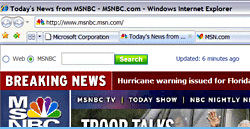 Microsoft have made their latest version of their Web browser, Internet Explorer 7, available for download.
Microsoft have made their latest version of their Web browser, Internet Explorer 7, available for download.
The build-up to the release has been considerable, as the product has been available as a beta download for the last 14 months.
To many, Microsoft’s browser has become less relevant as alternative browsers have become more stable and accepted – primarily the open source Firefox and to a lesser extent Opera.
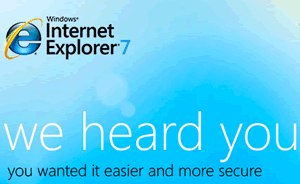 Feature Catchup
Feature Catchup
The other browsers have been innovating features that their users couldn’t imaging living without, such as Tabbed browsing, where new browsing sessions are opened in a tab across the top of the screen rather than littering the desktop with new windows. With ie7, Microsoft has finally caught up and has built it in.
Other features included to match the same level of functionality, are reading RSS feeds and building in a search box to the browser that they call Live Search. There has been some controversy over the search, as it defaults to searching on Microsoft’s own service. It is understood that this was the only option right up to just before the final release, when other search options were added.
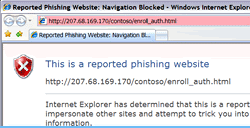 Phishing warning
Phishing warning
Built into ie7 is the knowledge of sites that are known for phishing – sites that lure the innocent user into providing personal information, often banking details, that are then used for criminal purposes. When an ie7 user goes to one of these sites by mistake, the Web address bar is turned red and a message is displayed.
Beware! spoof versions
Some naughty Trojan writers have used the release of ie7 to attempt to spread their evil seed to the world. They sent out a spam email using the [email protected] email address, pointing people to a link that launched a Web site made to look like Microsoft’s own download site.
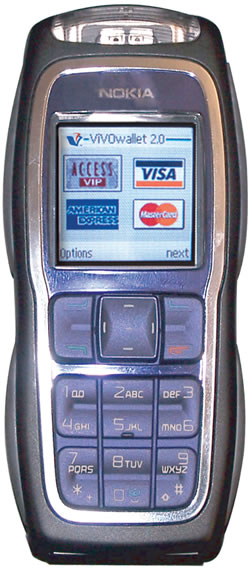 An NFC payment system is on trial in Amsterdam allowing people taking part to make purchases using their mobile phone.
An NFC payment system is on trial in Amsterdam allowing people taking part to make purchases using their mobile phone.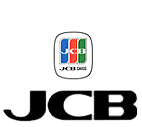 Approximately 100 selected JCB cardholders are now enjoying fast, easy, and convenient payments with Mobile J/Speedy at selected merchants, where they used to pay by cash.
Approximately 100 selected JCB cardholders are now enjoying fast, easy, and convenient payments with Mobile J/Speedy at selected merchants, where they used to pay by cash.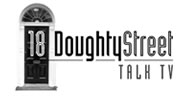 Now there’s been much talk of the death of traditional linear TV and it appears that the demise of the traditional broadcasters in the UK is taking a little longer than some expected. Perhaps hidden behind the excitement of Google buying YouTube and the UK start of two further channels on the Freeview platform; Five US and Five Life is a channel that could be the harbinger of how TV channels in the future will launch.
Now there’s been much talk of the death of traditional linear TV and it appears that the demise of the traditional broadcasters in the UK is taking a little longer than some expected. Perhaps hidden behind the excitement of Google buying YouTube and the UK start of two further channels on the Freeview platform; Five US and Five Life is a channel that could be the harbinger of how TV channels in the future will launch.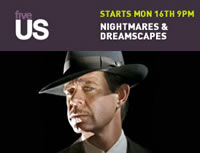 The relatively innocuous content is lodged somewhere between the fashionable haphazard Zeitgeist of UGC (User generated Content) and the bland professionalism of the big broadcasters, time will tell if there’s a hole there that this will fill.
The relatively innocuous content is lodged somewhere between the fashionable haphazard Zeitgeist of UGC (User generated Content) and the bland professionalism of the big broadcasters, time will tell if there’s a hole there that this will fill.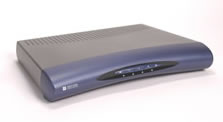 Over the last ten years, Motorola has moved from the first commercial digital STB to shipping fifty million digital STBs.
Over the last ten years, Motorola has moved from the first commercial digital STB to shipping fifty million digital STBs.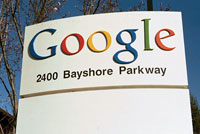 Google is converting its Californian headquarters to run partly on solar power, creating the largest solar installation on any corporate campus in the United States.
Google is converting its Californian headquarters to run partly on solar power, creating the largest solar installation on any corporate campus in the United States. Google haven’t disclosed the costs of the project, but it’s unlikely to cause much of a dent in the pockets of a company reputed to have nearly $10 billion in the corporate coffers.
Google haven’t disclosed the costs of the project, but it’s unlikely to cause much of a dent in the pockets of a company reputed to have nearly $10 billion in the corporate coffers.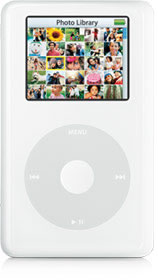 Apple has continued to increase the number of iPods they’re selling. Their latest quarterly results show that they grown the 8.11m iPods they sold in the previous quarter to 8.73m this quarter, beyond market expectations. The quarter that is reporting didn’t change or introduce any new iPods.
Apple has continued to increase the number of iPods they’re selling. Their latest quarterly results show that they grown the 8.11m iPods they sold in the previous quarter to 8.73m this quarter, beyond market expectations. The quarter that is reporting didn’t change or introduce any new iPods. Logitech has announced that it is buying Slim Devices for $10m cash plus a possible performance-based payment tied to certain revenue targets. The news came on the same day as their best-ever Q2 sales, which reached $502m.
Logitech has announced that it is buying Slim Devices for $10m cash plus a possible performance-based payment tied to certain revenue targets. The news came on the same day as their best-ever Q2 sales, which reached $502m.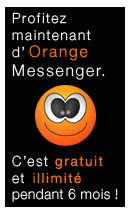 Orange and Microsoft have joined together to offer Instant Messaging (IM) connectivity between computers and mobile phones, claiming it’s a first.
Orange and Microsoft have joined together to offer Instant Messaging (IM) connectivity between computers and mobile phones, claiming it’s a first. Sony and Sky are tying up to show the UK’s first HD advert tonight.
Sony and Sky are tying up to show the UK’s first HD advert tonight. Shot over 10 days and with a crew of 250 people, the paint was mixed on site by 20 people. The clear up took 5 days and 60 people.
Shot over 10 days and with a crew of 250 people, the paint was mixed on site by 20 people. The clear up took 5 days and 60 people. The launch of this first HD ad follows a major marketing agreement between Sky and Sony to promote HD.
The launch of this first HD ad follows a major marketing agreement between Sky and Sony to promote HD.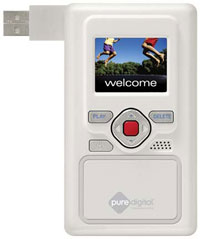 Pure Digital Technologies has announced a cheapo camcorder that can upload movies to video sharing Web sites like Google Video with a single click.
Pure Digital Technologies has announced a cheapo camcorder that can upload movies to video sharing Web sites like Google Video with a single click. Allen Weiner, an analyst with market tracker Gartner, reckoned Pure Digital were on to a winner, describing the pint-size camcorder as “simple, but also revolutionary.”
Allen Weiner, an analyst with market tracker Gartner, reckoned Pure Digital were on to a winner, describing the pint-size camcorder as “simple, but also revolutionary.”